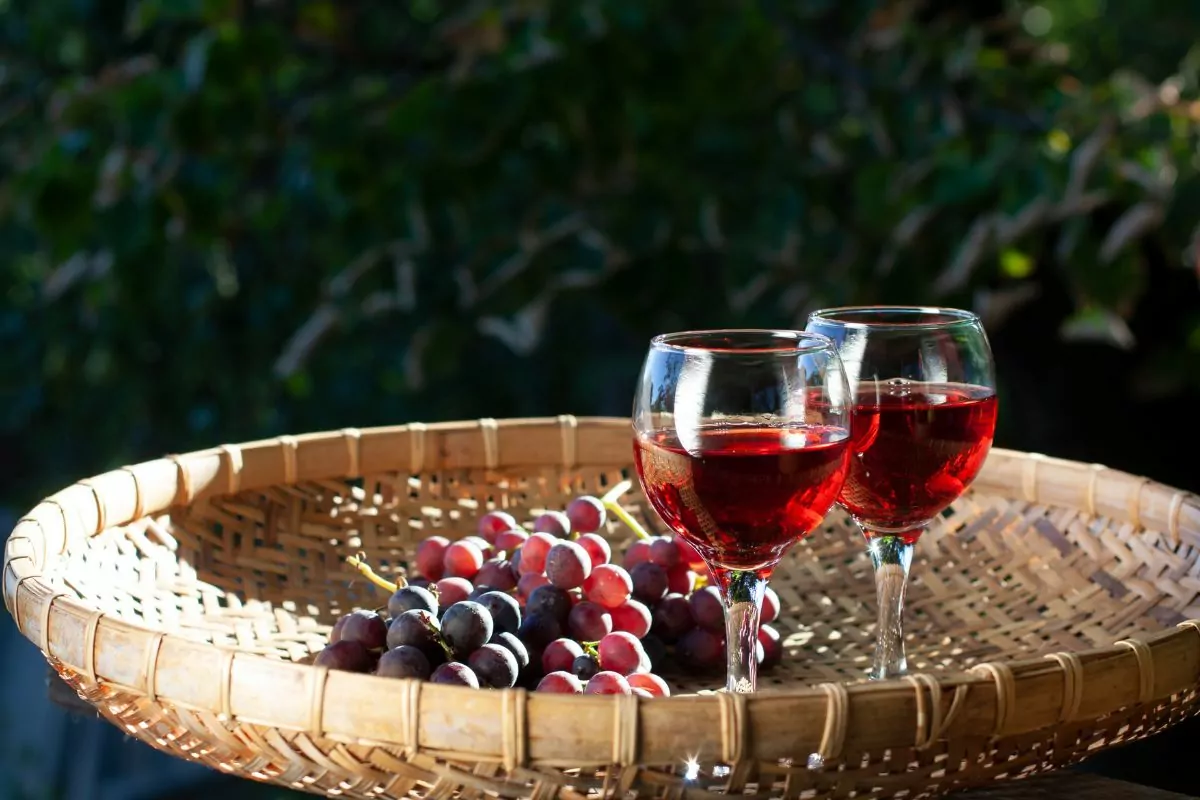Velvety, supple, silky, opulent, grippy, chewy, and smooth are just a few terms used to describe wine.

Anyone who has read a wine review or attended a tasting has heard these words in one way or another. Thrown into the mix, you might hear tannins or tannic structure, too.
Discussion around these terms tends to be omnipresent, leaving you to wonder what exactly is tannin.
In an effort to not become too geeky when it comes to describing wine, understanding the role of tannins in wine helps us to appreciate how they affect the age-ability, taste, and texture of our favorite wines.
With this in mind, this article will explore everything you need to know about tannin levels in wine.
Let’s get started.
What Are Tannins?
Tannins are, essentially, used to determine a wine’s pucker power. It is typically more prominent in younger red wines that haven’t had time to soften up with age.
A wine featuring high levels of tannins can be described as astringent and bitter.
Tannins are derived from the stems, seeds, and skins of grapes during the wine production process. Technically, these are plant-derived polyphenols.
Red wines tend to be in contact with the grape for prolonged periods, meaning they have higher levels of tannins.
Additionally, it can also be derived from the oak barrels used to age wine. Here, wood tannin is absorbed by the wine and, in terms of oak, creates a vanilla flavor in the wine.
Tannin is usually referred to as the textual component that provides that mouth-drying feeling when drinking wine.
As such, they are generally responsible for providing red wines with a defined structure or “body”. It could be considered similar to how a skeleton provides the body with support and enables movement.
This is one of the reasons why it is usually recommended to allow your wine to aerate or “breathe” before drinking it. Here, the air helps to soften the tannins, especially in young wine.
You can also find tannins in teas, nuts – including almonds and walnuts–, spices – such as clove and cinnamon –, dark chocolate, red beans, quince, and fruits – like grapes and pomegranates.
Red Wines With High Tannins

- Monastrell/ Mourvèdre – This grape is known as Monastrells in its hometown of Spain and Mourvèdre. It produces a wine that is very high in tannins.
- Bordeaux blend – A blend of Bordeaux large consists of Merlot, Cabernet Franc, and Cabernet Sauvignon grapes. This can then be completed with Carménère, Petit Verdot, or Malbec. Thanks to this combination of thick-skinned grapes, it creates a heavily tannic wine.
- Nebbiolo – Don’t let its light coloring put you off, Nebbiolo is a bold and heavily tannic wine from Piedmont, Italy.
- Petit Sirah – This is an offspring grape of Syrah. While it isn’t grown widely throughout the world, it creates a bold and largely tannic wine.
- Tannat – These grapes originate from France and produce bold red wines. Although, they can be used in rosé blends, too.
Red Wines With Low Tannins
- Dolcetto – You can find dolcetto grapes in Piedmont, Italy. Dolcetto translated in English means “little sweet one”. Despite exhibiting low tannins, this can sometimes be slightly higher.
- Pinot Noir – The grapes used in Pinot Noir are known for having thin skin. Therefore, creating a wine that is low in tannins and light in the body.
- Gamay – Since Gamay is closely related to the Pinot Noir grape, it also features a thin-skinned grape. Thus, it is slightly tannic.
- Barbera – Another grape that is native to Italy is Barbera. This is typically made into medium to full-bodied wines which are low in tannins and feature fruit-forward flavors.
Can White Or Rosé Wine Contain Tannins?
Rosé and white wines are usually macerated for less time (if at all). This creates a much lighter color that features fewer tannins from the grape stems, skins, and seeds.
However, this doesn’t mean the wines don’t contain any tannins. Rosé and white wines can develop tannins from barrel contact.
These can come from the wood itself. However, they are less evident and much softer than tannins from grapes.
The only exception to tannins in white wine is when it is made using red wine processes. Here, winemakers keep the white grape skins in contact with the juice for longer – creating a wine that features a copper-orange color.
Final Thoughts
You may already be familiar with that dry feeling on your tongue from drinking red wine. Well, this is the result of tannins.
Tannins are plant-derived polyphenols that are found in the skin, seeds, and stems of grapes.
Depending on the winemaking process, some wines contain more tannins than others – this is particularly true when it comes to red wines.
- Why Does Wine Taste Better With Age? - June 14, 2023
- What Does It Mean When A Bottle Of Wine Is Corked? - June 14, 2023
- Wine Fridge Vs Wine Cellar – Which One Should You Choose? - June 14, 2023
